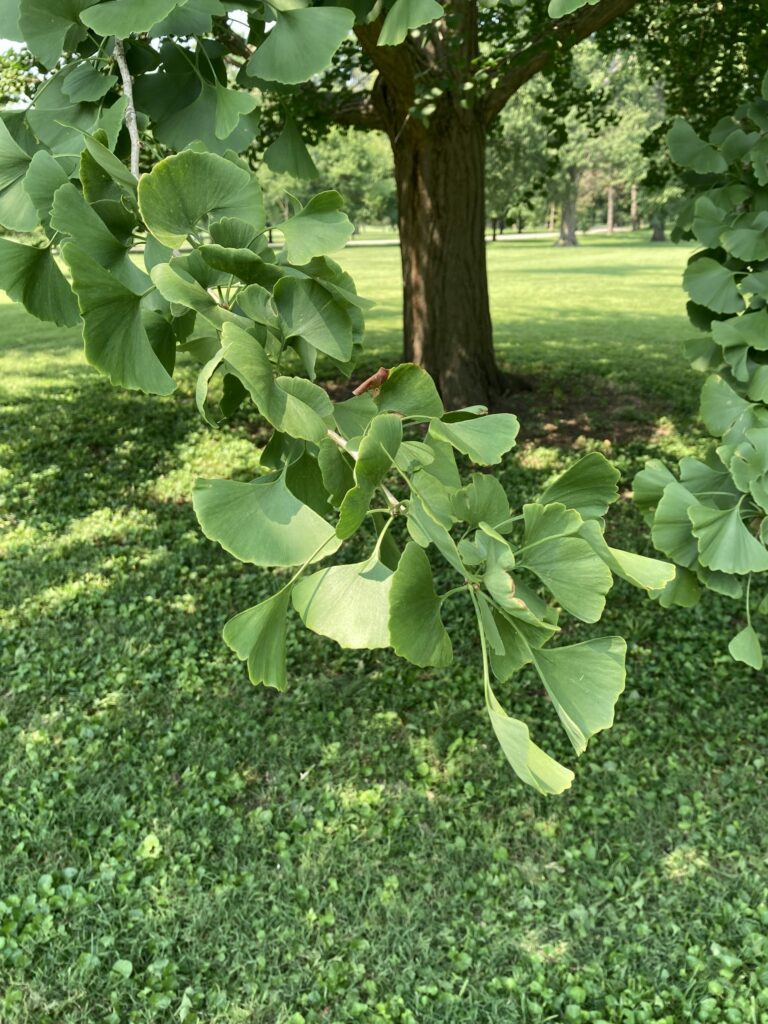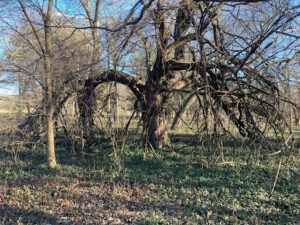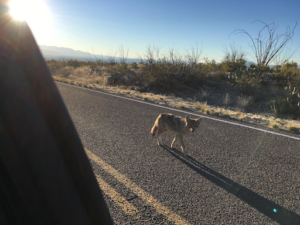By: Mark Halpin, Forestry Manager
Ginkgo biloba is native to North America! It’s just been 7 million years since there was a natural population of them here. Okay, maybe that means it’s not native, but it shows just what a unique tree it is. Ginkgo has existed, most likely in its modern form (it’s hard to tell from fossils) for around 200 million years. It has outlived all of its friends and relatives as well as all of its natural enemies, which means that it is almost totally free of pests and diseases, but also almost totally devoid of wildlife value. It is a time traveller from the age of the dinosaurs, plopped down into the modern world – there is something both marvelous and lonely about it.
Although related to conifers – they’re all gymnosperms – ginkgo has its own division: Ginkgophyta. It predates the pines and spruces that are its closest living relatives by millions of years. Its seeds are enclosed in a fleshy coat – not truly a fruit, but in no way like the hard, aromatic cones of its relatives. Although an attractive silvery-gold color, this seed coat is rich in butyric acid, named for its presence in butter and found in all manner of dairy products and plant oils. A little bit of it goes a long way, giving things like parmesan cheese, butter and milk a pleasant tang and funky smell. A little more of it goes way too far in the smell department, tipping the balance from “ripe” to “I’m going to throw up”. While some people certainly appreciate the eye-watering aroma of ripe cheeses like Limburger, I have yet to meet anyone who enjoys the exquisitely offensive stench of ginkgo seeds. They are only produced by females (ginkgos are dioecious, having male and female sexual structures on separate plants), typically at around 20 years of age. So by the time you can be certain that your tree won’t metaphorically vomit all over the ground every fall, it may be too late. (The nut inside of this reeking husk is collected, toasted, and eaten in traditional Chinese food. They must be absolutely delicious.)
So why do we still see so many of these stinking things around? Because nothing but human foolishness can kill them (well, that and deer, whose overpopulation is a byproduct of human foolishness anyway). Even the hardiest, most well-adapted native trees can succumb to insect defoliation, fungal and bacterial diseases, but not ginkgo. So in a polluted, stress-ridden city center, if your choice may be no tree at all or a ginkgo, is it really that bad to plant one? (As long as it’s not a female?) It has certainly been overused, and in the majority of instances there was a native tree that would have done the same job better. It’s become something of a lazy fallback, but it certainly works in some cases. It has no wildlife benefits but it’s better for air quality, cooling and stormwater mitigation than turf grass or concrete. Male cultivars have also become more reliable, mitigating the stench issue.
Ginkgo has become something of a poster child for the inferiority of exotic plants, but let’s have some sympathy for it. It’s been around the block since before the block existed, and in 7 million more years, maybe it will be native to North America again. It did not ask to be brought here and overplanted, and it has displayed no invasive tendencies whatsoever – surprising given its tenacity. It is one of the famous Hibakujumoku tree species of Japan – species that survived the atomic blast at Hiroshima, many being within less than half a mile from the detonation site. It’s a survivor, and one worthy of our respect. (It is worth pointing out that among the Hibakujumoku is also our native Catalpa bignonoides, criminally underplanted, tough as nails, and covered in fragrant flowers in the spring. Maybe we should plant more of them…)




